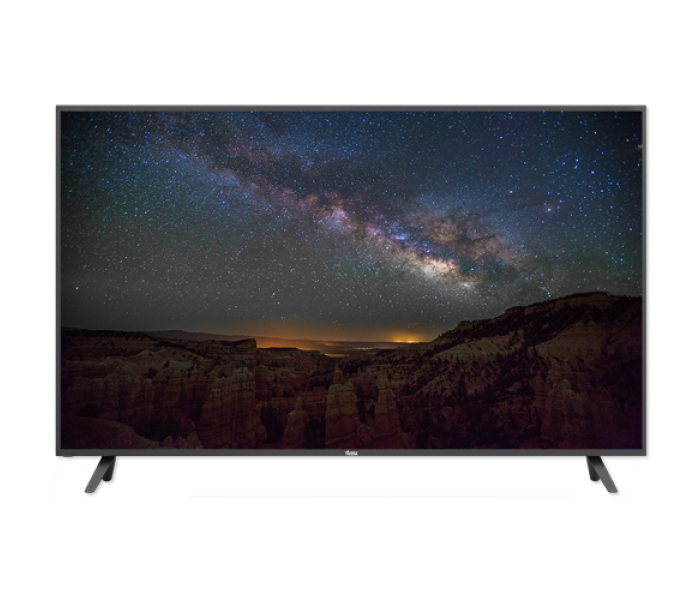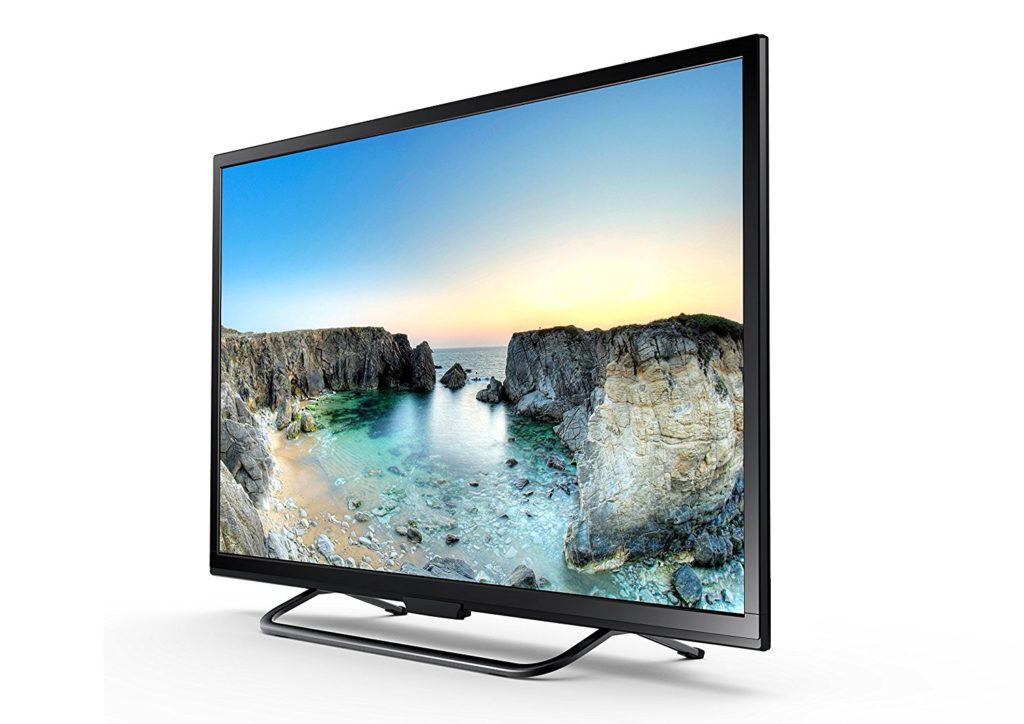Is sitting close to the TV bad for your eyes? Based on the memories from your own childhood and the advice you give kids when you find them sitting right in front of the TV, then the answer seems to be ‘yes’.
The truth is a little more nuanced, though. To fully answer the question: ‘Is sitting close to the TV bad for your eyes?’ we’ll need to go back in time. Right back to the origins of this question. This brings us to the very first models of mass-produced screens: The type that run on cathode ray tubes.
Content Breakdown
Is sitting close to the TV bad for your eyes? The tube and its effect on eyesight
Older people remember using CRT screens as computer monitors and televisions. Those who have experience with old-school computer monitors remember when polarization screen filters became a must-have companion piece for CRT monitors. To explore whether sitting close to a screen is bad for the eyes, we should start by exploring the purpose of optical screen filters.
1. An overly bright screen affects your comfort level and sometimes, your long-term vision
Optical screen filters are an anti-glare mechanism that prevents excessively bright white light from hitting the eyeball. This is a useful device, since exposing the eyes to a constant stream of bright light can cause eye strain, headaches and overall fatigue. Exposing your eyes to a screen that is too bright can cause pain, watery eyes and other kinds of discomfort. Constant eye strain may affect eyesight in the long term.
The closer you sit to a bright screen, the more light hits your eyes. This forces your eye muscles to narrow the pupil, causing strain. Sitting farther away from a bright screen reduces the amount of strain that your eyes go through. That said, the best solution would be to calibrate the screen, but there’s only so much calibration can do. Tweaking the settings on a CRT screen cannot completely eliminate the issue; hence the screen filters that are popular with CRT monitors.
2. Flicker can cause eye strain
This brings us to the next aspect of CRT screens that many people find problematic: Flicker. With CRT screens, flicker is noticeable at a refresh rate of 60 frames per second. The closer you sit to a screen with perceivable flicker, the more uncomfortable you’ll be. Again, the discomfort comes as a result of the eye strain you put yourself through by sitting close to the screen. Although sitting further from the screen reduces the effect of the flicker, it does not eliminate it.
The good news is that most CRT televisions are capable of refresh rates of more than 75 frames per second, which is enough to eliminate the kind of flicker that affects your eyes.
Is sitting close to the TV bad for your eyes? LCD panels and other modern screens
The issues of both brightness and flicker also apply to the display screens of today. TFT screens shared a few drawbacks with tube screens, due to their fluorescent lighting. That being said, calibrating an LCD-LED or OLED screen will prevent eye strain, even if you sit close to the TV. It’s safe to say that size, energy efficiency, cost and most importantly, comfort, are the reasons why the world transitioned away from CRT and fluorescent screens.
Still, it is not always a good idea to sit right in front of a TV. In the same vein, you should limit your screen time on all devices with a screen. Eye strain is bound to happen if you stare at any type of screen for long stretches of time. It’s worse if you spend lots of time right in front of a large screen, which emits way more light than the average mobile device. Eye strain may not always lead to poorer eyesight, but it could be a contributing factor, especially in the long term.
Picture quality and your eyes
When you’re shopping for a TV, you want one with high resolution, impressive contrast and high peak brightness levels. As an example, widescreen televisions that support HDR have peak brightness levels that can be as high as 600 nits. Imagine binge-watching a show with a lot of sunlit scenes or the stark white setup of a torture lab or mental asylum. The brilliant, lifelike colors will tire your eyes.
More so if the movie or series you’re watching has stark contrast. Excellent contrast forces your eyes to simultaneously and continually process brilliant colors as well as deeper, darker blacks, blues, greens or reds. Chances are you’ll end up with a tension headache.
On the bright side, high-end, high-resolution televisions don’t show much pixilation, even when you watch them from a short distance. But that’s cold comfort when your head and eyes hurt after what should be an enjoyable, immersive movie.
Is sitting close to the TV bad for your eyes? Your eyes work differently when you’re close to a screen
The closer you are to a screen, the less you blink. This could lead to dry eye, which is irritating. When the eyes dry out, it feels like you have particles trapped between the eyelids and the eyeballs. Close proximity to a light source will also cause your eye muscles to work overtime to narrow the pupils and keep them that way. This could weaken the muscles in the long term.
Focusing on something that’s right in front of you also causes your eyes to converge. This means that your irises will tend to move towards each other and towards the bridge of your nose. The muscles in the eyes have to work overtime to keep each eye in this position. If you force the eye muscles to do this for extended periods of time, you will experience eye strain.
Is sitting close to the TV bad for your eyes? The size of the TV
No one likes to sit in the front row at the movies. At that distance, the screen is way too big for comfort. The same goes for a 75-inch screen. You’ll simply have a better viewing experience if you sit at the recommended distance, which is the screen size multiplied by 1.5 or two.
Is sitting close to the TV bad for your eyes? The height of a wall-mounted TV
Another downside of sitting at the front of a movie theater is that you have to tilt your head upwards to see the screen. The same thing applies to a wall-mounted TV. If you sit too close to it, you will likely develop neck pain by the time you finish watching that movie or game. The neck pain may come with a side of eye strain.
Food for thought: If you’re sitting too close to the TV, you may need an eye checkup
Most young kids like to sit nose to nose with the TV and their little eyes can handle it, for some reason. Most of these children outgrow the habit when they start to feel discomfort. If you’re older and you find that you see better the closer you are to the TV, see an eye doctor, just to make sure that your vision is fine.
The verdict
Is sitting close to the TV bad for your eyes? This is not exactly a yes or no question. There is scant research that monitors viewers’ vision over time, taking into account the type of TV sets they own and how close each subject sits from their screens. There’s little documented proof that demonstrates a correlation between poor vision and watching TV at close quarters. It turns out your parents had no clue what they were talking about.
What we do know is that when you watch TV for hours while sitting close to the screen, you are more likely to experience eye strain, tension headaches and sometimes, neck pain.
Read more:
Samsung Q70 Series Review: Good Performance at a Good Price
TCL 40S325 40 Inch Roku Smart TV Review
LG 55UM7300PUA Review: Alexa Built-in 55″ 4K UHD Smart LED TV
Best Budget Sound Bar: Vizio SB3621-E8
Sceptre E248W-19203R Review: A Bargain 24-Inch Full HD Monitor



